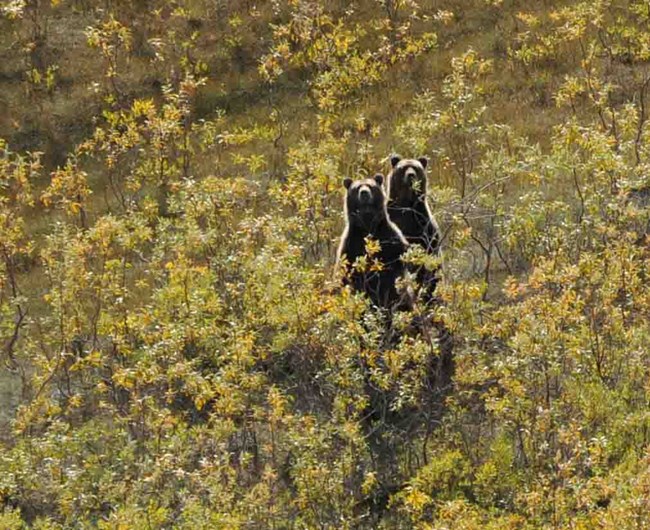Last updated: October 26, 2021
Article
Arctic Brown Bear Productivity

NPS/Erika Jostad
The warming Arctic is experiencing longer growing seasons that can influence individuals, populations, and communities. However, these changes are largely local and variable. Researchers compared body size, body condition, and the number of cubs produced by four separate Arctic brown bear populations from 1977 to 2016 to determine how they might be different based on local conditions. They found that climate and food availability does appear to influence the bear populations, but are variable depending on the year and location. This suggests that local studies, rather than extrapolations from adjacent studies or even local studies from the past, are critical to describe current conditions and inform management decisions.
Brown bear (Ursus arctos) body size, condition, and productivity in the Arctic, 1977-2016
Abstract
The Arctic is generally warming with lengthening growing seasons that can influence individuals, populations, and communities. However, temperature data indicate that the changes are largely local and variable. We compared body size, body condition, and productivity among four Arctic brown bear (Ursus arctos) studies separated in time and space from 1977 to 2016. As body size, condition, and productivity varied among populations, local conditions, both biotic and abiotic, appear to influence the size, condition, and productivity of individual bears and, thus, bear populations. We conclude that current local studies are critical in informing management decisions, because extrapolations from concurrent adjacent studies or reliance on past local studies may not represent the present condition of an Arctic brown bear population.
Hilderbrand, G. V., K. Joly, M. S. Sorum, M. D. Cameron, and D. D. Gustine. 2019. Brown bear (Ursus arctos) body size, condition, and productivity in the Arctic, 1977-2016. Polar Biology:1-6
